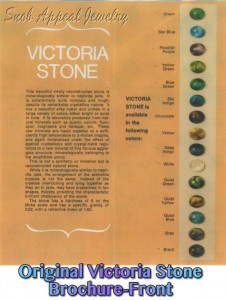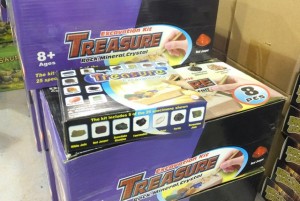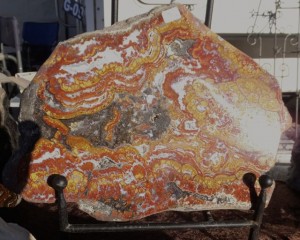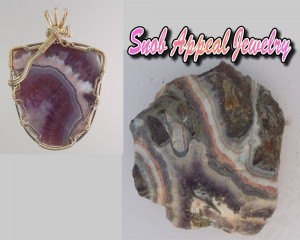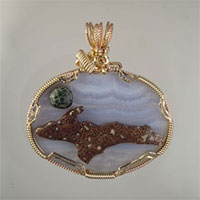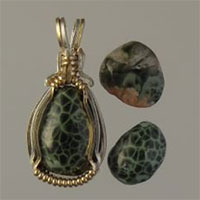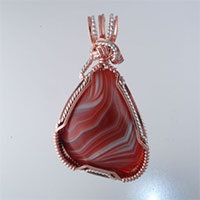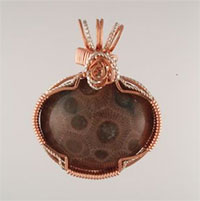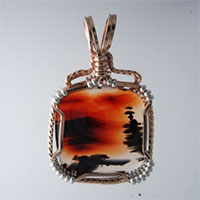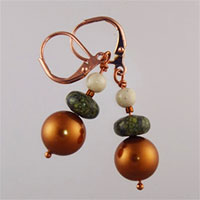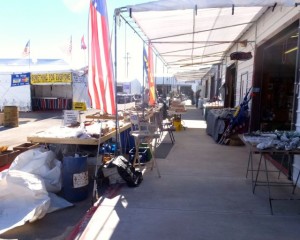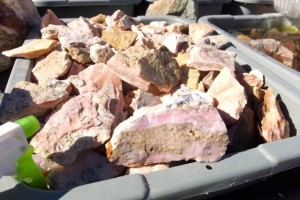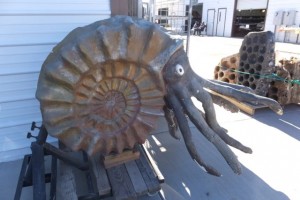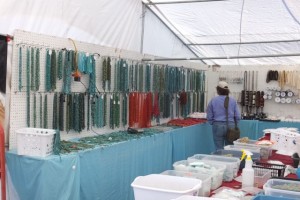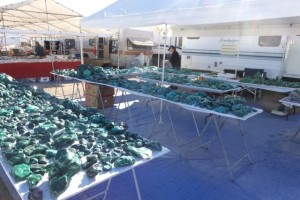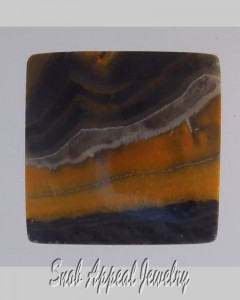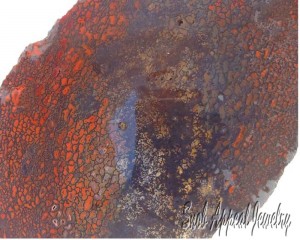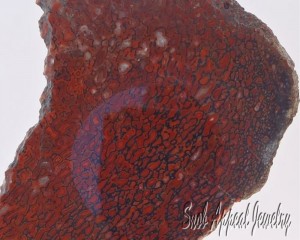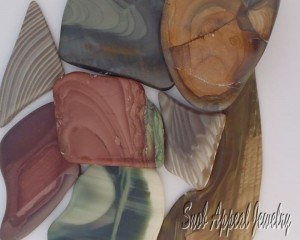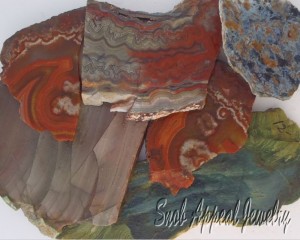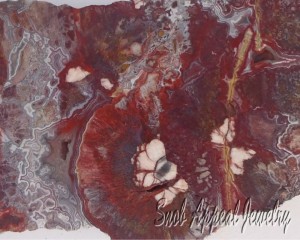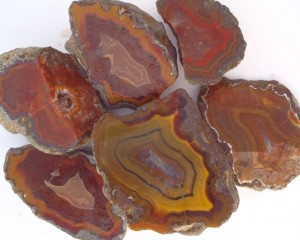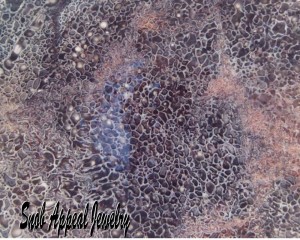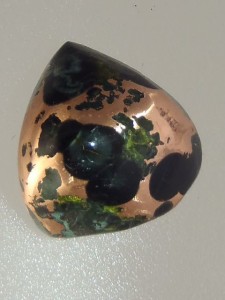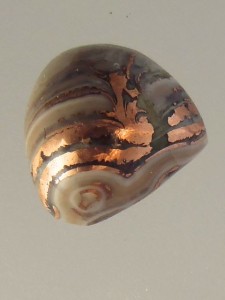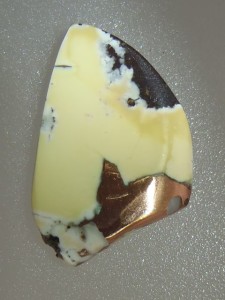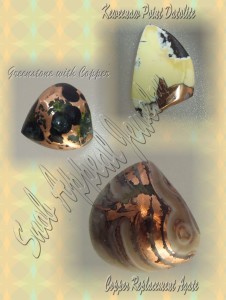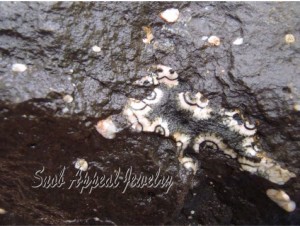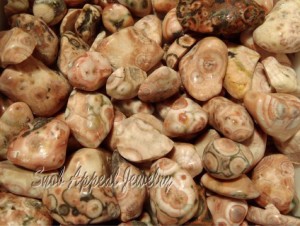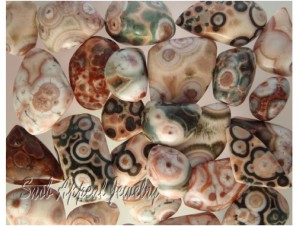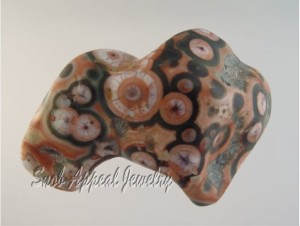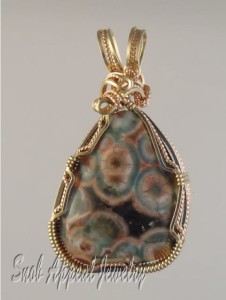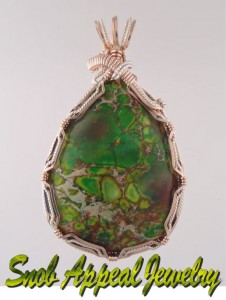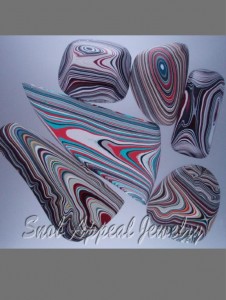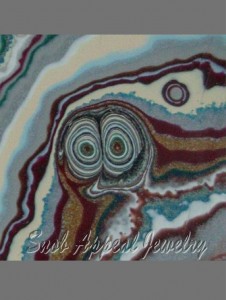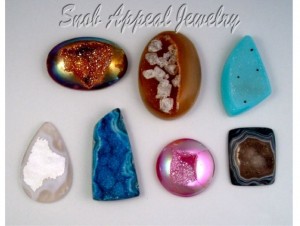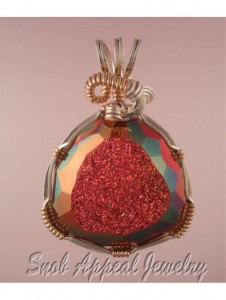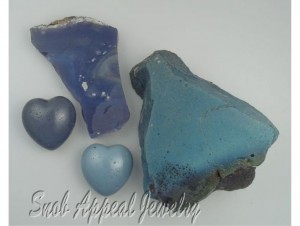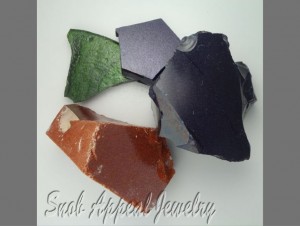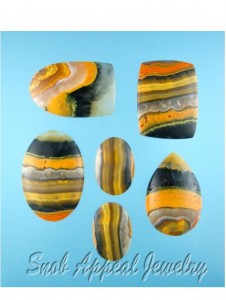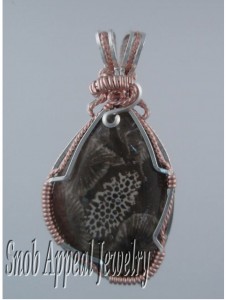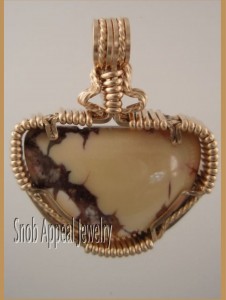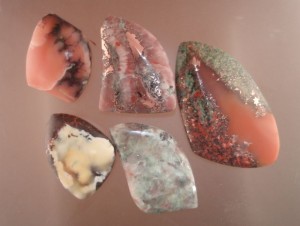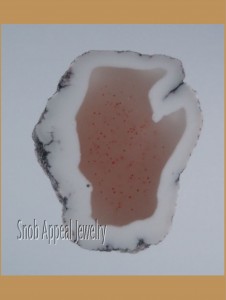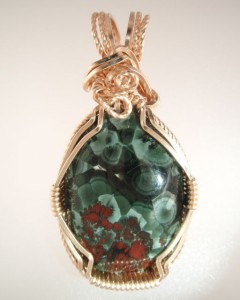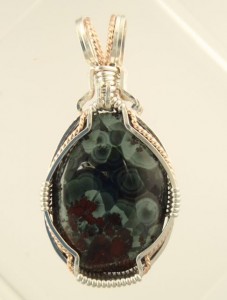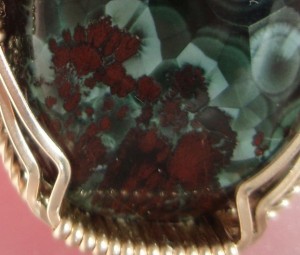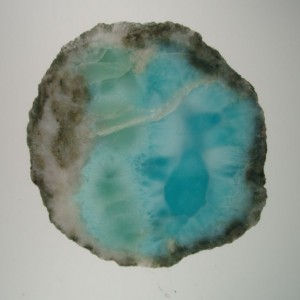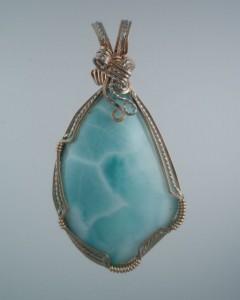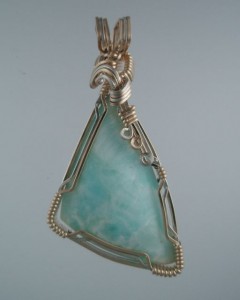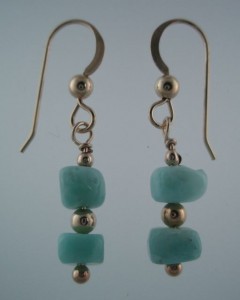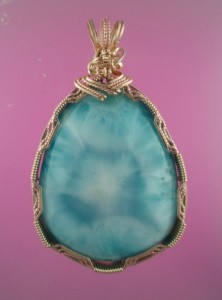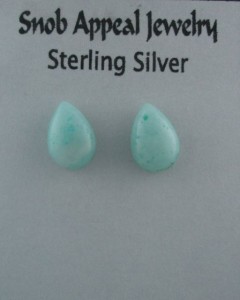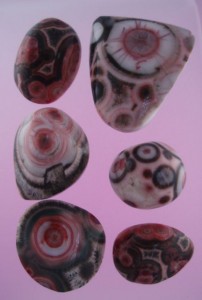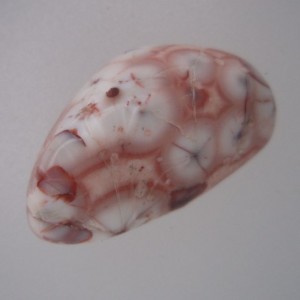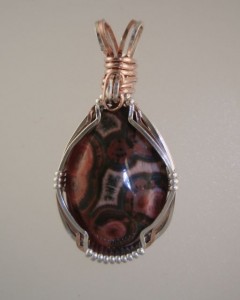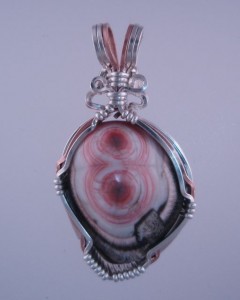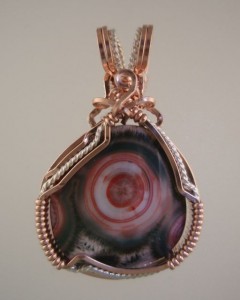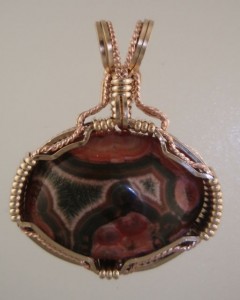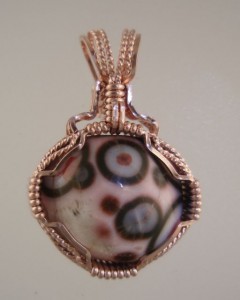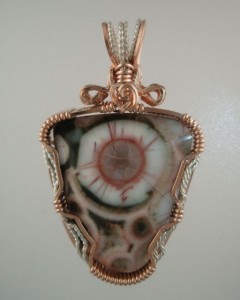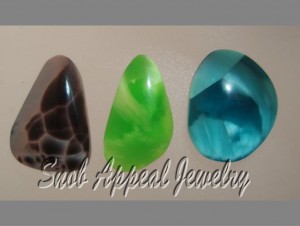
It was first reported in Lapidary Journal in April 1969 that Victoria Stone was similar to Nephrite Jade, and so this myth began. In a later addition of Lapidary Journal we see a picture of Mrs. Iimori standing among piles of raw materials used in the manufacture of Victoria Stone. Victoria Stone was a name derived for marketing purposes. This chatoyant gemstone was at first named Iimori Stone. Victoria Stone has a hardness of around 6, and takes a great polish. The only issues I’ve found in it as it can be pitted at times and sometimes demonstrates cracks that have to be worked around. I’ve seen much Victoria Stone that has too many cracks, making it pretty much worthless for lapidary usage.
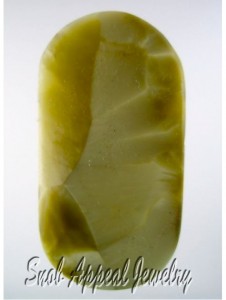
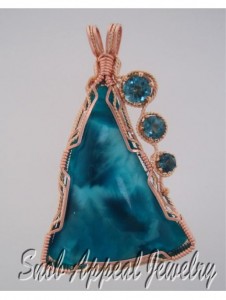
Sky Indigo Victoria Stone enhanced with London Blue Topaz
Victoria Stone has always been one of my favorite lapidary materials. There is some argument as to weather this is an actual “lapidary” material because recent discoveries identified i as a leaded glass material. Lapidary, by definition, is working with rocks and minerals, and gemstones to form usable products. Recent research has determined that Victoria Stone is actually leaded glass. Victoria Stone was created by Dr. S. Iimori in the late 1960’s.
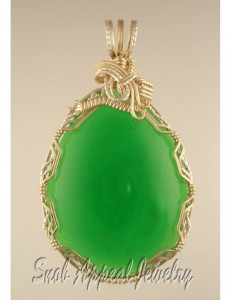
Meta Jade proceeded Victoria Stone.
A later Lapidary Journal article claimed that Victoria Stone was made from natural minerals “such as Quartz, Fluorspar, Magnesite, and Feldspar, etc.” The claim was these raw materials were melted together into a molten mass with secret crystallizers, then the molten magma was poured into boules and cooled under great pressure. Literature from the U.S. distributor, The Caprock, in Rock Island, Illinois, contributed to the original story that VS was a man made Amphibole. The claim by Iimori that he ended up with synthetic Jade is now proven incorrect.
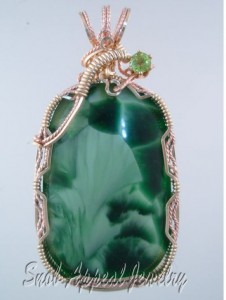
Blue/Green with a Peridot enhancer.
Dr. S Iimori never patented his process, only he, and his son apparently knew the secrets to the whole process. By supposition, you might assume that Iimori did not patent his formula because it was the same as Leaded Glass. The only secret, still unsolved, is what exactly was mixed into the molten mix to make it recrystallize like it does.
There is much mis-information on the web about Victoria Stone, and as with all Internet information it seems to have grown into folklore. Most people that sell this material will claim that this material is actually a man made amphibole, made from natural materials. Well glass is made from sand, and that is a natural material. Make your own judgements on that.
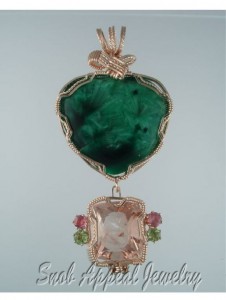
When the Victoria Stone “boule” was released from its mold they had a crust on them. This crust is indicative of a glass mixture. I still own a white boule with the crust still on it. I can tell you this crust is glass-like. All those working on re-inventing Victoria Stone are working on glass formulas. All the stories of this material being artificial Jade are being disproved, but you will still hear the myth that Victoria Stone is a “Natural Man Made Stone”. Also, you will hear the stories of Dr. Iimori taking the secret of making this material to his grave. The truth is his son knew the process, but when he tried to produce Victoria Stone himself one process failed or was forgotten, and Kato’s VS did not bind properly, making it unusable for lapidary work.
I have always thought Victoria Stone cuts and fractures almost like glass. What puzzles me is it seems to have an oily, slippery texture unlike any glass I’ve cut. The oily feel of the cut is, I believe, caused by the lead content in the glass. Other leaded glass I’ve cut does not seem as slippery feeling, if that makes sense. I think you have to cut a substantial amount of VS to appreciate how wonderful it cuts and polishes.
The questions I have on how Victoria Stone was made are many. Why, if it is glass, did these boules have to be cooled under pressure over a long period of time? I assume it was so the crystals could form properly. Why was Iimore’s son not able to re-produce Victoria Stone without it falling apart? I predict one of the many re-inventors working on making VS will eventually discover the elusive secret. I personally know that there are individuals in Australia and the U.S, and probably in Asia also, are working on producing Victoria Stone again. You will see glass that resembles Victoria Stone in the not too distant future. Remember you saw it here first.
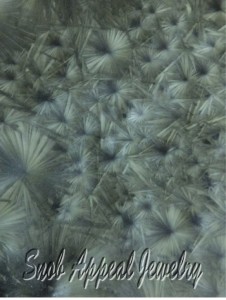
A closeup of the bottom of a rare Gray Victoria Stone Boule
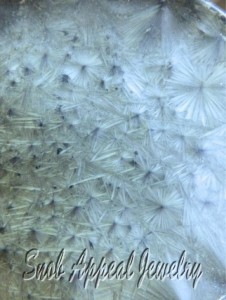
The bottom of a rare White Victoria Stone Boule shows the star pattern that all boules displayed.
I own a pair of rare boules, which are a cylindrical shape with one flattened end and weigh perhaps 3-4 pounds. My friends, having worked with Victoria Stone since the 60’s, have told me that when working this material you had to remove the crust carefully and let the boule rest for a few weeks. They say that the boules would actually make cracking noises when the crust was removed. Expansion inside the boule caused these noises. I’ll be curious is one of my 50 year old boules makes sounds when I cut them.
I decided to update this post , that I first posted on May 8, 2009, to add this information and pictures of my boules. I believe there are very few full boules left after forty years, and I wanted to give you the opportunity to see them before I cut them up. I acquired these boules in an estate sale a couple years back. The gray boule is especially rare. You never see Gray VS on the market. Since it was a very dull color that most Lapidarists found boring, not much was made or purchased. I am hoping that the boules are not cracked inside too badly. I may even Youtube (is that a verb?) the cutting procedure for you later this year.
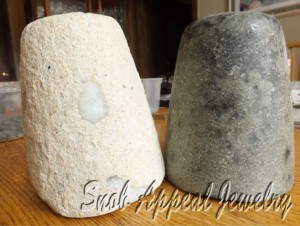
My two Victoria Stone Boules The white one still has its’ crust, The right gray one has been pealed.
Finding a full Victoria Stone boule is impossibly rare after all these years. There are just that many around anymore. All the boules Iimori produced were approximately five inches tall, four inch base, tapering to a rounded top of approximately three inches. Even finding and acquiring these boules has a great story. I may do another blog on that alone.
Another unusual crystallization habit to Victoria Stone Boules is that you see “star crystallization” only at the bottom and near the surface of these boules. So IF you see stars on a piece of Victoria Stone, you know it is that very rare and most coveted bottom slice. I describe this piece as the “Filet Mignon” of the boule. The rest of the boule is “Feathery” and does not star as the bottom. I do not know how the boules were poured, so perhaps what I call the bottom (The fattest section), was actually the top when it was poured.
Victoria Stone boules were sold at the Tucson Gem Shows in the 70’s, as well as slabs and cabs. I wish I had invested all my money in this stuff back then, as it is unbelievably expensive today, and virtually impossible to find. I have purchased entire rock collections just to get a small quantity of Victoria Stone. We are one of the few sites on the Internet to offer Victoria Stone Jewelry.
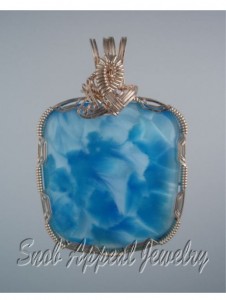
Sky Blue beauty
Iimori actually manufactured an artificial jade that he called “meta Jade”. I still have some of this material and it is hard to tell the difference between it and natural Imperial Jade. When Victoria Stone cooled, it re-crystallized from its molten state; forming beautiful feather-like chatoyant crystals. I see similar crystallization in Pectolite (Larimar), Thomsonite, Isle Royale Greenstone, and Prehnite.
Victoria Stone was originally produced in fifteen colors: green, sky blue, reddish purple, yellow green, blue green, sky indigo, chocolate, yellow, deep indigo, white, black, grey, quiet blue, quiet yellow, and quiet green. (See Color Chart)
Recently, someone posted up some pieces (chunks) of Victoria Stone they found in Tucson or Quartzite. Never buy Victoria stone in broken chunks. You have to remember that this is a glass-like material and if a boule was dropped or broken up with a hammer, all these pieces will be cracked and virtually unusable. Always purchase VS in slabs or cabs if you find any.
My original post on this can be seen at May 2009.
Check out all our Victoria Stone Jewelry now. I expect that this beautiful stone jewelry will continue to increase in value as time goes on.
Original Colored Brochure
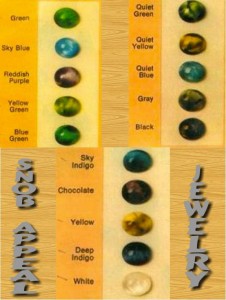
It was difficult to get a clear image on my copy, but the stone colors are as close as I could get them.
